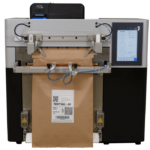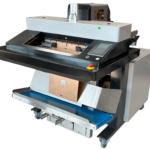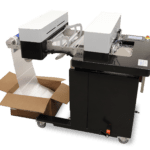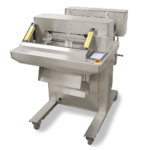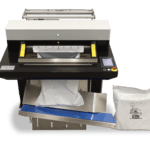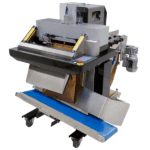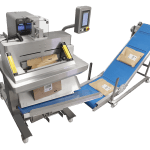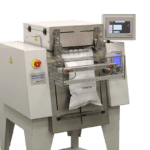The Ultimate Guide to Automatic Baggers: Efficiency, Benefits & Key Considerations
In today’s fast-paced production environments, automation is the key to efficiency and consistency. Automatic baggers streamline the packaging process, increasing productivity, reducing labor costs, and ensuring uniform packaging quality. Whether used in e-commerce, food processing, pharmaceuticals, or manufacturing, automatic baggers offer a scalable solution for businesses looking to enhance their packaging operations.
This guide will explore how automatic baggers work, their benefits, and key factors to consider when choosing one for your operation.
How Do Automatic Baggers Work?
Automatic baggers are designed to fill, seal, and sometimes print labels on bags with minimal manual intervention. The process typically involves:
Bag Feeding – Pre-opened or rollstock bags are automatically positioned for filling.
Product Loading – Items are manually or automatically placed into the bag.
Sealing & Printing – The machine seals the bag and may apply a printed label, barcode, or date code.
Bag Dispensing – Completed bags are dispensed for collection or further processing (e.g., boxing, sorting).
Key Benefits of Automatic Baggers
✔️ Increased Throughput: Automates repetitive tasks, significantly boosting packaging speed.
✔️ Labor Cost Reduction: Reduces the need for manual bagging, freeing up labor for other tasks.
✔️ Consistent Seal Quality: Ensures uniform, high-quality bag seals for better product protection.
✔️ Versatility in Packaging: Accommodates various bag sizes and materials, including poly, paper, and compostable bags.
✔️ Integration with Production Lines: Many models can integrate with weighers, counters, and labeling systems.
Types of Automatic Baggers
1. Rollbag (Pre-Opened) Baggers
Use pre-opened bags on a roll, ideal for high-speed applications.
Common in medical, food, e-commerce, and industrial packaging.
2. Vertical Form Fill Seal (VFFS) Machines
Create bags from a continuous roll of film, form them, fill, and seal in a vertical motion.
Great for snack foods, powders, and granulated products.
3. Horizontal Baggers
Best for larger, heavier products that need horizontal loading.
Used for hardware, pharmaceuticals, and larger retail products.
Key Factors for Choosing an Auto Bagger
🔹 Bag Type & Material: Do you use poly bags, paper bags, or barrier films?
🔹 Production Volume: How many bags do you need to process per day?
🔹 Product Size & Shape: Will your items require specific handling or custom loading features?
🔹 Integration Needs: Does it need to work with scales, conveyors, or label applicators?
🔹 Printing & Labeling: Do you need barcodes, date codes, or logos printed on the bags?
Common Questions About Automatic Baggers
💡 What industries benefit the most from automatic baggers?
E-Commerce & Fulfillment Centers – Automate order packing and shipping.
Food Packaging – Seal fresh, frozen, or dry goods with airtight protection.
Medical & Pharmaceutical – Ensure sterile packaging for medical devices and components.
Manufacturing & Industrial – Bag parts, fasteners, and tools efficiently.
💡 How do automatic baggers improve efficiency?
Reduce packaging time by up to 50% or more.
Provide consistent, reliable seals, reducing product waste.
Integrate with existing production and labeling systems for seamless automation.
💡 Are there eco-friendly options for automatic bagging?
Many machines now support biodegradable, recyclable, and compostable films.
Paper-based automatic bagging solutions are available for sustainability-focused businesses.
Final Thoughts
Automatic baggers are a smart investment for businesses looking to scale operations, reduce labor costs, and improve packaging efficiency. Whether you need a rollbag system, vertical form-fill-seal machine, or a high-speed integration, the right automatic bagger can transform your packaging process.
Have questions? Contact us—we’d love to help you find the best automatic bagging solution for your needs! 🚀


